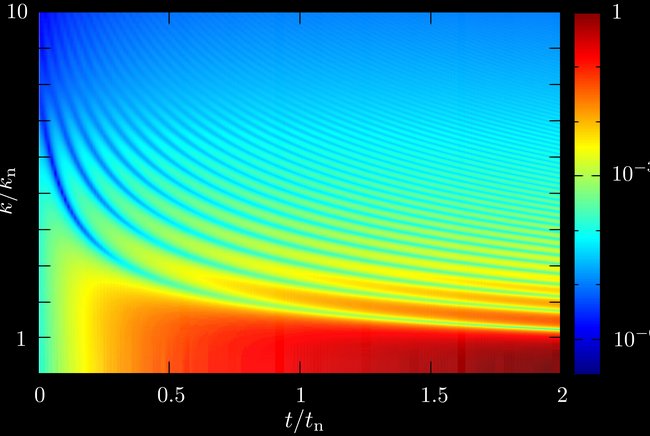Quantifying the effects of three-particle collisions in quantum gases
Paul Mestrom developed a new numerical method to make predictions on the effects of three-particles collisions in quantum gases.

Quantum gases consisting of atoms are extremely suitable for observing quantum mechanical phenomena and making new types of quantum matter. In his PhD research Mestrom was able to quantify the effects of three-particle collisions in those ultracold gases. With a new numerical method he was able to characterize and predict certain effects of these collisions. He defended his PhD on September 27th at the department of Applied Physics.
A quantum gas can be created from an atomic gas by cooling the atoms to temperatures below one microkelvin. This is very close to absolute zero and corresponds to roughly -273 degrees Celsius. The density of these atomic quantum gases is extremely low, many thousands of times lower than the density of the air around us.
Interaction strength
In addition, they are very small with a typical diameter of a hair’s breadth. The properties of these ultracold quantum gases depend on the interactions between the particles that collide with each other. Due to the extremely low density, collisions between two particles occur much more often than collisions between three or more particles. Nevertheless, three-particle collisions have a major impact on the stability of ultracold quantum gases.
Using the laws of quantum mechanics Mestrom could derive an interaction strength that can be used to quantify the effects of those three-particle collisions. He developed a numerical method that allowed him to calculate this interaction strength for different types of three-particle systems and study both elastic and inelastic collisions between three particles.
Gas into liquid
First, he investigated collisions between three identical particles. When the interaction between two particles is just strong enough to form a molecule without orbital angular momentum (a so-called s-wave molecule), three particles can form infinitely many types of molecules. Mestrom analyzed how the universal scaling of the size of these molecules – known as the Efimov effect – is influenced by the models describing the two-particle interactions.
In addition, the effect of elastic three-particle collisions on ultracold quantum gases is increased when the two-particle interaction strength is extremely low. Mestrom showed that the interaction strength between three atoms then behaves universally. Moreover, this interaction strength has a repulsive effect on the quantum gas. This repulsive force can even stabilize an unstable quantum gas into a quantum liquid.
Spin
Enhanced effects of elastic three-particle collisions also occur in ultracold gaseous mixtures. This happens, for example, when two non-identical particles can form a weakly bound molecule with a positive orbital angular momentum (a so-called p-wave molecule). The three-particle interaction strength then behaves universally.
Furthermore, quantum mechanical particles can have an intrinsic angular momentum. This is known as spin. One can create ultracold quantum gases in which the particles have the freedom to change their spin state. This change can occur via collisions with other particles.
In his thesis, Mestrom investigated the contribution of three-particle collisions to the spin dynamics. In this way he have determined the effect of three-particle collisions on the magnetic properties of atomic quantum gases. Moreover, he has predicted how this effect can be enhanced using electromagnetic radiation and magnetic fields.
Paul Mestrom defended his PhD titled: ‘Three-body collisions in dilute quantum fluids’ on September 27th. He was supervised by dr.ir. Servaas Kokkelmans and prof.dr.ir. Jom Luiten.